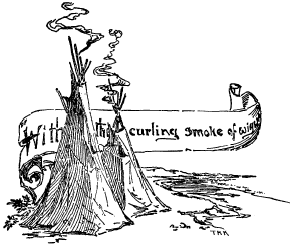|
the Indians Roamed the Prairies |
|
|
"Should you ask me, whence these stories? |
|
|
|

|
|
|
46 |
|
|
|
|
strictly Nebraska tribe, The Oto and Missouri occupied
the southeast; the Omaha, the northeast; the Pawnee the
central part; and the Sioux the northwest. So far as we know
the Pawnee were the first of our Indians to see white men.
It is probable that a company of them, from the southeastern
part of what is now known as Nebraska, visited Coronado
while he was in Quivira. |
|
|
|
|
47 |
|
|
land they had left in Nebraska, and received a new
reservation in the Indian territory, now Oklahoma. |
|
|
48 |
|
|
|
|
in the fur trade. After several years Lucien visited his
family in New Orleans, but was so changed in appearance,
looking like the Indians with whom he lived that they
refused to accept him until an old negro mammy recognized
him by a mark on his body. He endeavored to induce his
family to take his children but they indignantly refused to
have anything to do with them; on his way back to Nebraska
from this visit, he sickened and died, leaving his children
in the care of Father De Smet, who educated them in Catholic
institutions. |
|
|
|
|
49 |
|
|
and named in honor of the Chief who did so much for his
people. |
|

Hotel Fontennelle |
 |
 |
 |
MARDOS COLLECTION
© 1999, 2000, 2001 for the NEGenWeb Project by Pam Rietsch,
T&C Miller